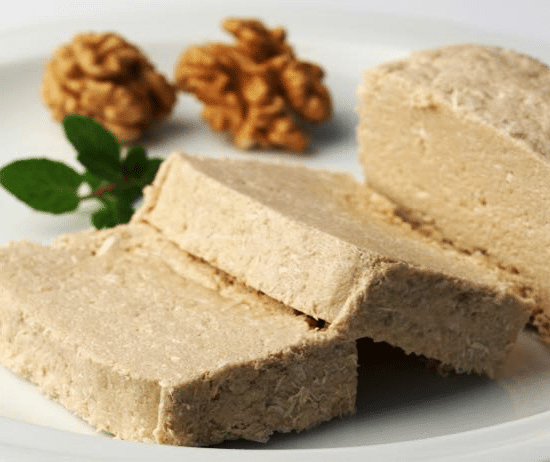Halva (Халва), the rich, crumbly dessert well-loved across many cultures, is so densely filling it almost manages to feel like a meal – and not an entirely unhealthy one at that. There are more than one hundred types of halva, which is generally ground and sweetened nuts and/or seeds.
Its role as a staple dessert extends across so many centuries and cultures that it can hardly be said to belong to any one nationality. Enjoyed and widely available in shops and bazaars across the former Soviet Union, however, it is there most associated with Central Asia, the entry point from which halva made its way to Russia, Ukraine, and Belarus. Central Asia is historically and geographically closer to Turkish, Arabic, and Indian halva-eating cultures.
 How “Halva” Got Its Name
How “Halva” Got Its Name
(Почему она носит такое название?)
Halva gets its name from the Arabic word “halwa,” meaning sweets or desserts. The origins of halva are disputed, although many Russian-language sources claim that it originated in Iran as many as 2500 years ago.
In the 7th century, it seems the word referred to a paste of dates and milk in Arabia, and by the 9th century it indicated a paste made of flour and sugar. Now, halva can refer to two categories of sweets. One is a gelatinous mix of fried flour and sugar, popular in Greece, India and the Middle East. The other, the one most popular in the former USSR, is made of nut or seed butter and sugar, and is popular in the Mediterranean, the Balkans, Eastern Europe, Central Asia, and parts of the Middle East and India. In some countries, halva is also made from fruits or carrots.
In Tajikistan and Uzbekistan, halva is called “лавз.” There, it comes in two versions. The soft version is made from sugar syrup, egg white, and sesame seeds. The solid version is made by adding sesame seeds to pulled sugar. Pulled sugar is produced by boiling sugar and water, and then churning the cooked sugar until it turns into a white, thick, flexible substance.
How and When to Eat Halva
(Как правильно есть халву?)
In the post-Soviet world, halva almost exclusively refers to a seed- or nut-based version of the dessert. Sesame is a common base, as are sunflower seeds. Sunflower halva is a particularly Eastern European variety, since sunflower seeds are widely grown and consumed in Eastern Europe. Nut halva is also common and can be made from walnuts, peanuts, or pistachios, to name a few varieties.
Marketplaces and bazaars across the former USSR will often have sellers offering large blocks of halva of varying colors, spotted with nuts or raisins, which can be bought by weight. Halva is also mass-produced by most major confectioners operating in the former USSR and sold in stores and shops as smaller chocolate-covered bars or as pre-packaged blocks.
It is also used as an ingredient in candies and cakes. Moscow confectionery company Рот Фронт (“Red Front,” from German) makes halva candies – small cubes of halva coated in chocolate, and wrapped in shiny red-and-gold foil – that are particularly popular. Wafer cookies, or “вафли,” with layers of halva are another well-known treat. Russian recipes for home-made halva cakes vary, but many involve layers of cream made from combined halva and condensed milk (сгущёнка).
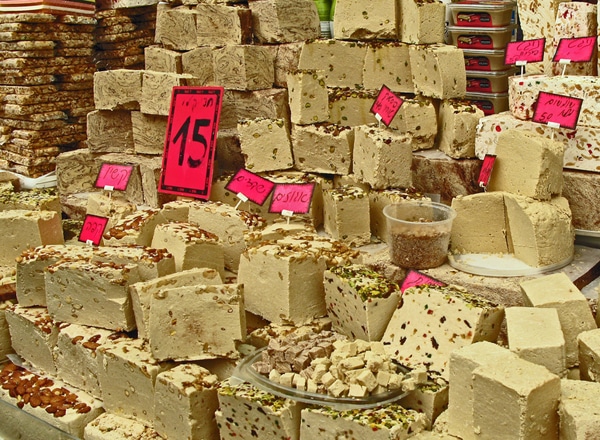
How to Prepare Halva
(Как правильно готовить халву?)
Nut or seed halva, when mass-produced, consists of three primary ingredients: ground nuts or seeds; sugar, honey, or molasses; and a foaming agent such as licorice root, soapwort, or marshmallow root. The foaming agent helps create the fibrous, layered consistency so specific to halva. Other flavoring ingredients, such as chocolate, cocoa powder, vanilla, or dried fruits may also be added.
In Russia, halva is more often bought than prepared at home. In other countries, however, making halva by hand is a long-standing tradition. In Uzbekistan, the term “кандалатчи” refers specifically to someone who knows the secret of preparing halva, for instance.
Making halva in a modern kitchen is in fact relatively simple. Honey is used more often in “домашняя халва” (home-made халва) than in mass-produced versions. Some recipes for “тахинная халва” (tahini halva) are as simple as combining tahini (sesame paste) and honey. Others include egg whites, and still others call for flour, butter, and/or milk.
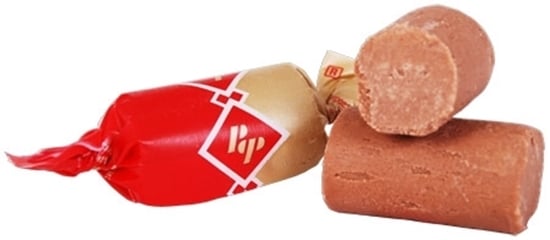
Given the long history and great geographic span of the food, there are many, many different ways to make.
Let’s Cook!
(Давай приготовим!)
You can generally find tahini in the ethnic foods aisle of many grocery stores or in shops specializing in Middle Eastern or Asian foods. You can also make your own relatively easily by combining 2-3 tablespoons of olive oil per cup of sesame seeds and running that through a food processor until it is a homogenous paste.
The simplest recipe for sesame halva involves simply mixing honey and tahini paste in a 1:1.5 ratio (i.e. 1 tbsp honey and 1.5 tbsp tahini). After a few hours in the refrigerator, the mixture will solidify.
If you would like to try something a little more complex, the following recipe is the next step up.
See below for a free recipe for halva. See also the free videos online. If you are interested in cooking from Russia, Ukraine, Georgia, and other places in Eurasia, make sure to see our full, free Eurasian Cookbook online! You might also be interested in the following specialized cookbooks we’ve enjoyed:
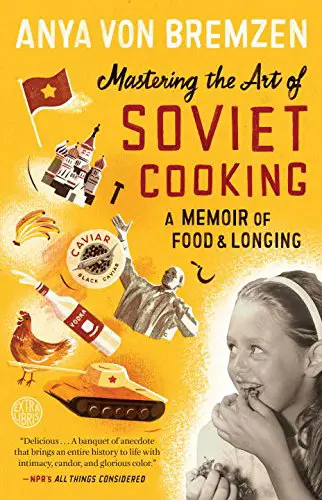 |
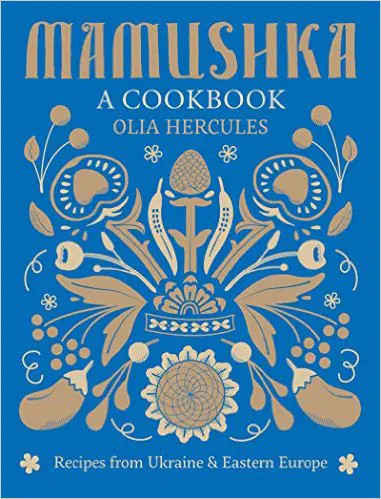 |
 |
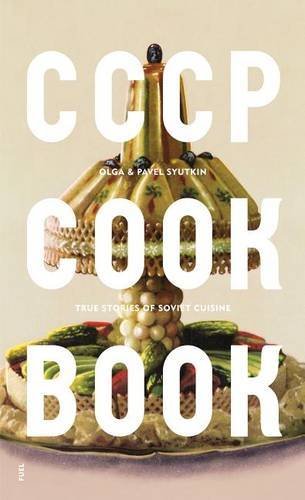 |
| Тахинная халва |
Tahini Halva |
Ингредиенты
Приготовление
|
Ingredients
Preparation
|
If you would like to try something a little more complex, the following recipe is the next step up.
| Тахинная халва | Tahini Halva |
Ингредиенты
Приготовление
|
Ingredients
Preparation
|
A basic recipe for nut halva:
| Халва «Орешек» | Nut Halva |
Ингредиенты
Приготовление
|
Ingredients
Preparation
|
A slightly more complex walnut halva recipe:
| Халва из грецких орехов | Walnut Halva |
Ингредиенты
Приготовление
|
Ingredients
Preparation
|
Our Favorite Halva Videos
This is a simple version of “тахинная халва.” The primary ingredients are ground sesame seeds and honey, but the chef adds a spoonful of coffee grounds for extra flavor.
This video is largely wordless (with a bit of Uzbek heard) but it is a fascinating look at the traditional recipe for halva still used in Uzbekistan. Ingredients are measured out on a balance, and sugar is whipped into a thick foam in a large cauldron.
This video, from a Russian program devoted to science and technology, has excellent, mouthwatering clips of sunflower halva being mass-produced using a traditional recipe in Tver. Chefs hand-stir the mixture of syrup, seeds, and soapwort until it reaches the perfect consistency.
You Might Also Like
Central Asia’s rich tradition of carpet weaving reflects the region’s history, culture, and identity. From the ancient nomads of the Pazyryk Valley to the artisans of Kyrgyz yurts and the urban weavers of Samarkand, carpets have long served both practical and symbolic functions. Their materials, techniques, and motifs reflect centuries of interaction between nomadic and […] The Talking Phrasebook Series presents useful phrases and words in side-by-side translation and with audio files specifically geared to help students work on listening skills and pronunciation. Below, you will find several useful phrases and words. To the left is the English and to the above right is an English transliteration of the Kyrgyz translation. […] Kyrgyz cuisine reflects the country’s heritage of pastoral nomadism. Life was spent moving livestock from pasture to pasture and living in collapsible, transportable yurts. The livestock themselves were the primary, sustainable food source. Everything else was either gathered from the land or traded for. The Kyrgyz did not engage in intensive settled agriculture until forced […] There are few essential things to know about Kyrgyzstan. One of these is the country’s folkloric hero, Manas. You’ll find nearly everything in Krygyzstan is named after him: the main airport, national parks, major streets in nearly every city and town, and even karate clubs and movie theaters, not to mention the statues of him […] What created Kyrgyz national identity? This is a complex question and one that is personal for each Kyrgyz person. This resource will focus on presenting one element of this identity – the Kyrgyz national narrative. Who are the national heroes and what are the pivotal events that they learned about in school? What are the […]
Knots of Culture: Central Asia’s Carpet Weaving Heritage

The Talking Kyrgyz Phrasebook
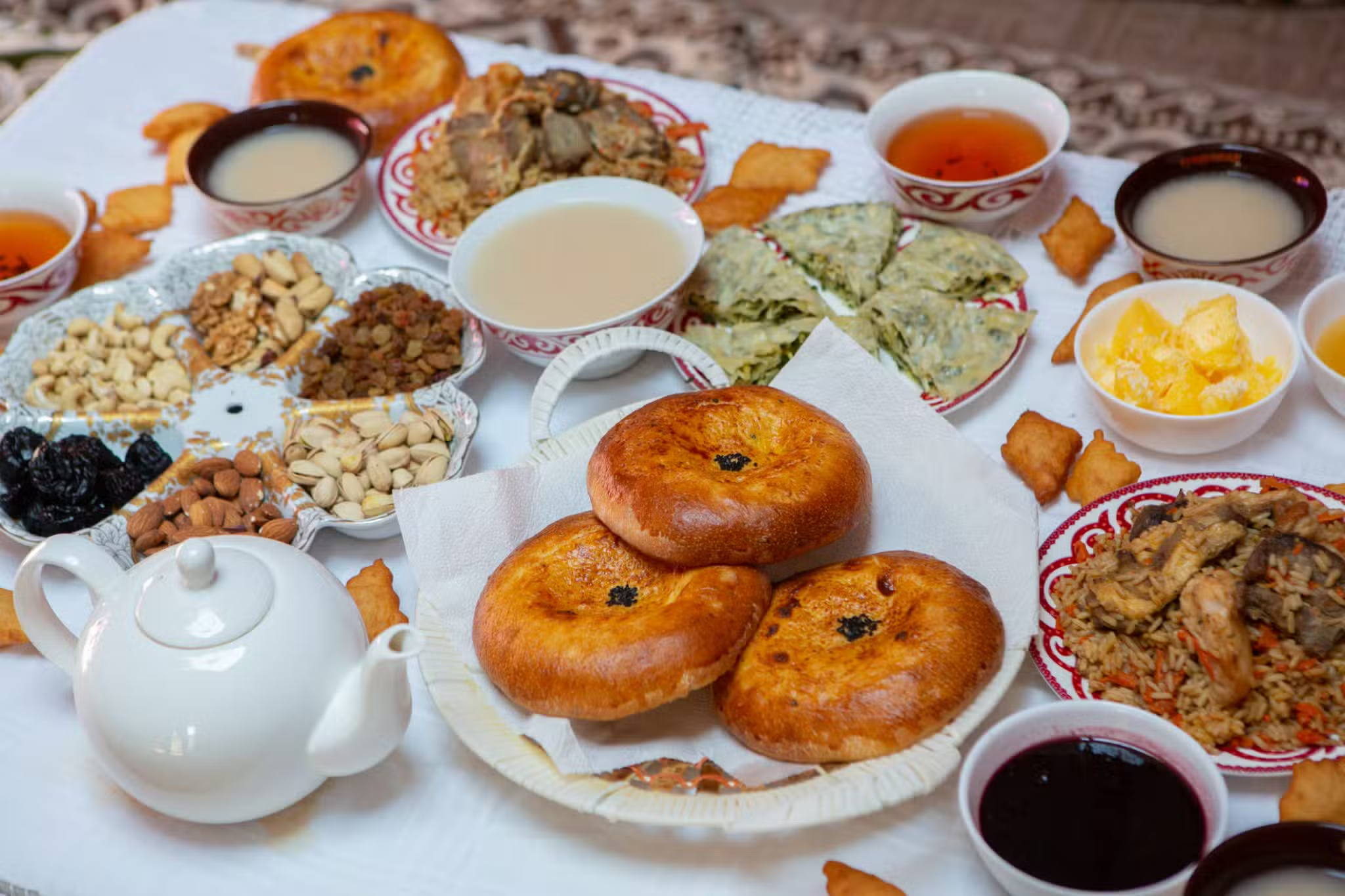
The Kyrgyz Food Dictionary

Manas and the Manaschi: Foundations of the Kyrgyz Soul
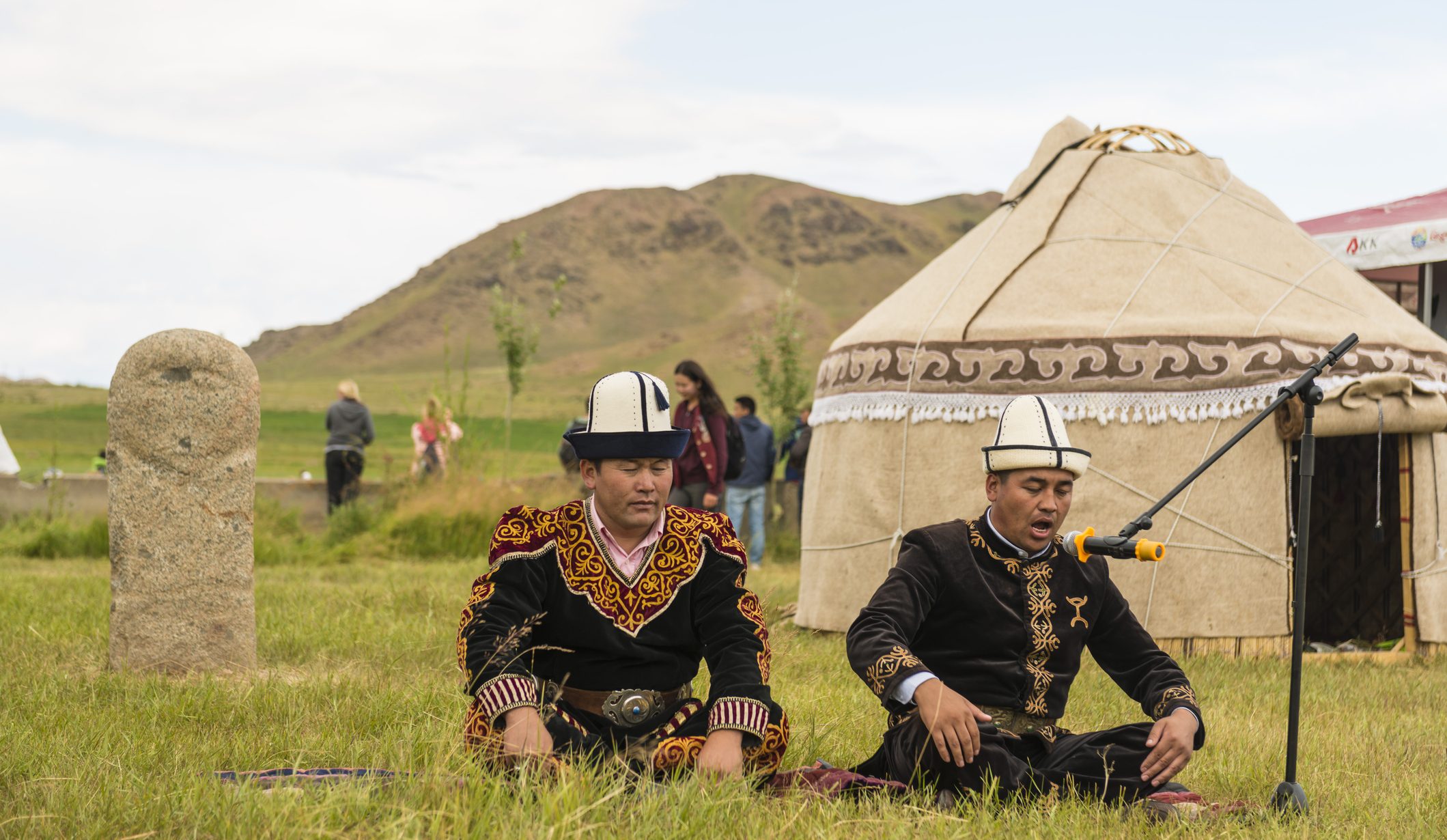
Kyrgyz Identity: Understanding the Kyrgyz National Narrative

